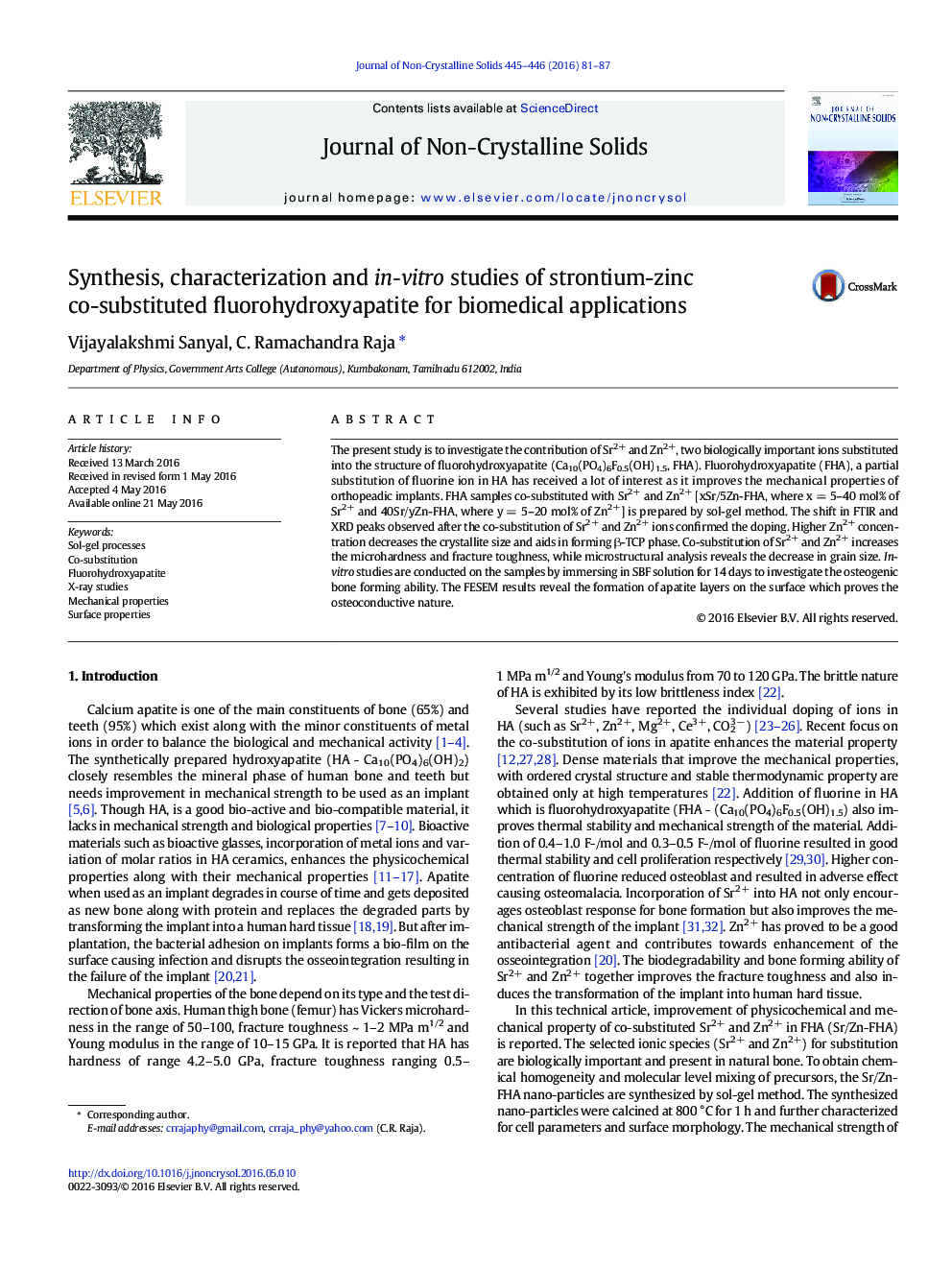| Article ID | Journal | Published Year | Pages | File Type |
|---|---|---|---|---|
| 1480294 | Journal of Non-Crystalline Solids | 2016 | 7 Pages |
•Pure HA and co-substituted (Strontium and Zinc) fluorohydroxyapatite (FHA) powders were prepared by Sol-gel method.•The co-substituted zinc and strontium ions altered the physicochemical properties of FHA and were analyzed by XRD and FTIR.•The samples were calcined to 800°C which resulted in the growth of cell parameters ‘a’, ‘c’ axes.•The co-substitution improved micro hardness and fracture toughness compared to pure HA.•Microstructures and in-vitro apatite forming ability were analyzed with FESEM and EDAX.
The present study is to investigate the contribution of Sr2+ and Zn2+, two biologically important ions substituted into the structure of fluorohydroxyapatite (Ca10(PO4)6F0.5(OH)1.5, FHA). Fluorohydroxyapatite (FHA), a partial substitution of fluorine ion in HA has received a lot of interest as it improves the mechanical properties of orthopeadic implants. FHA samples co-substituted with Sr2+ and Zn2+ [xSr/5Zn-FHA, where x = 5–40 mol% of Sr2+ and 40Sr/yZn-FHA, where y = 5–20 mol% of Zn2+] is prepared by sol-gel method. The shift in FTIR and XRD peaks observed after the co-substitution of Sr2+ and Zn2+ ions confirmed the doping. Higher Zn2+ concentration decreases the crystallite size and aids in forming β-TCP phase. Co-substitution of Sr2+ and Zn2+ increases the microhardness and fracture toughness, while microstructural analysis reveals the decrease in grain size. In-vitro studies are conducted on the samples by immersing in SBF solution for 14 days to investigate the osteogenic bone forming ability. The FESEM results reveal the formation of apatite layers on the surface which proves the osteoconductive nature.
